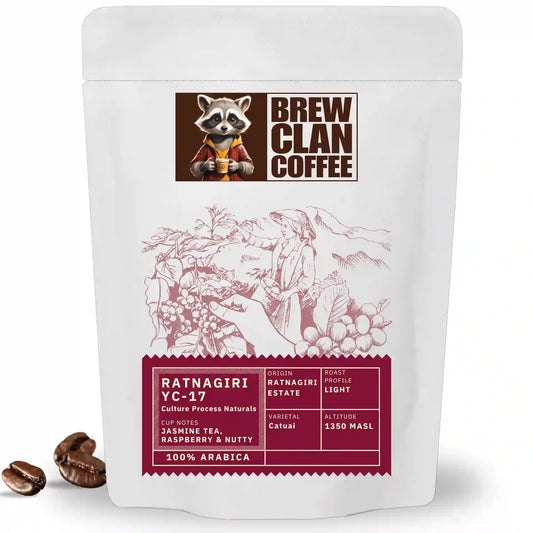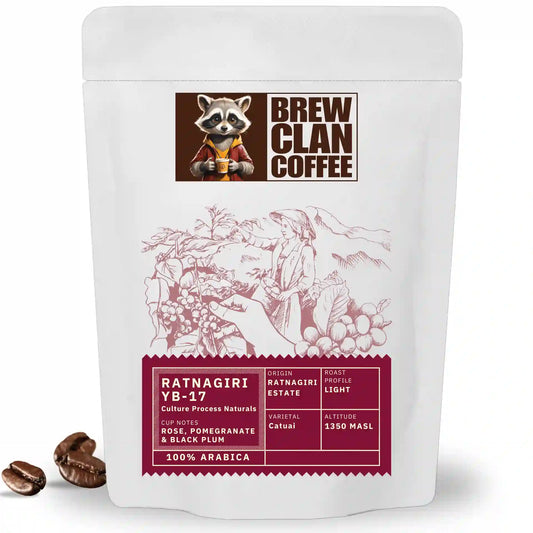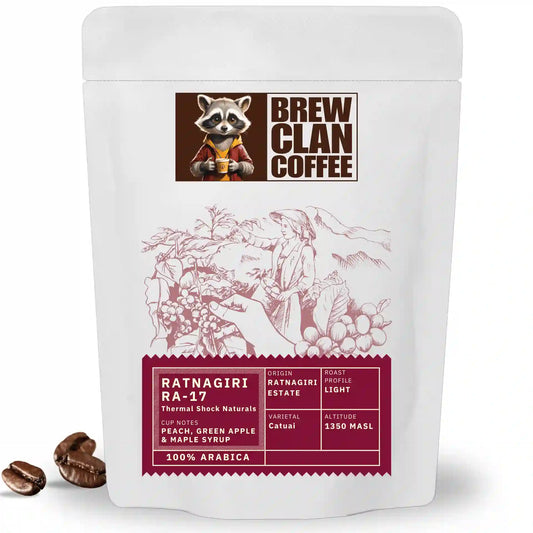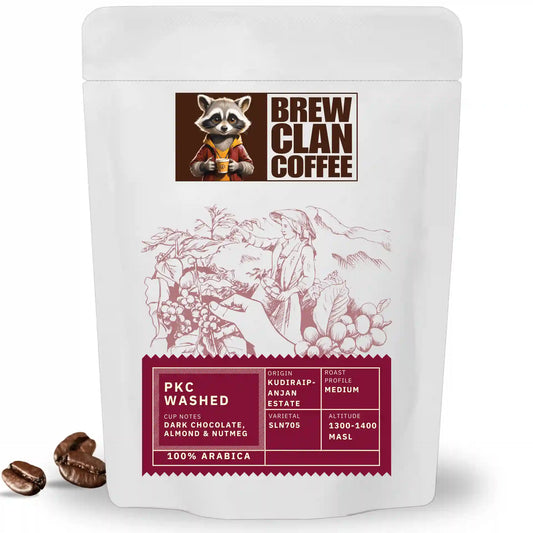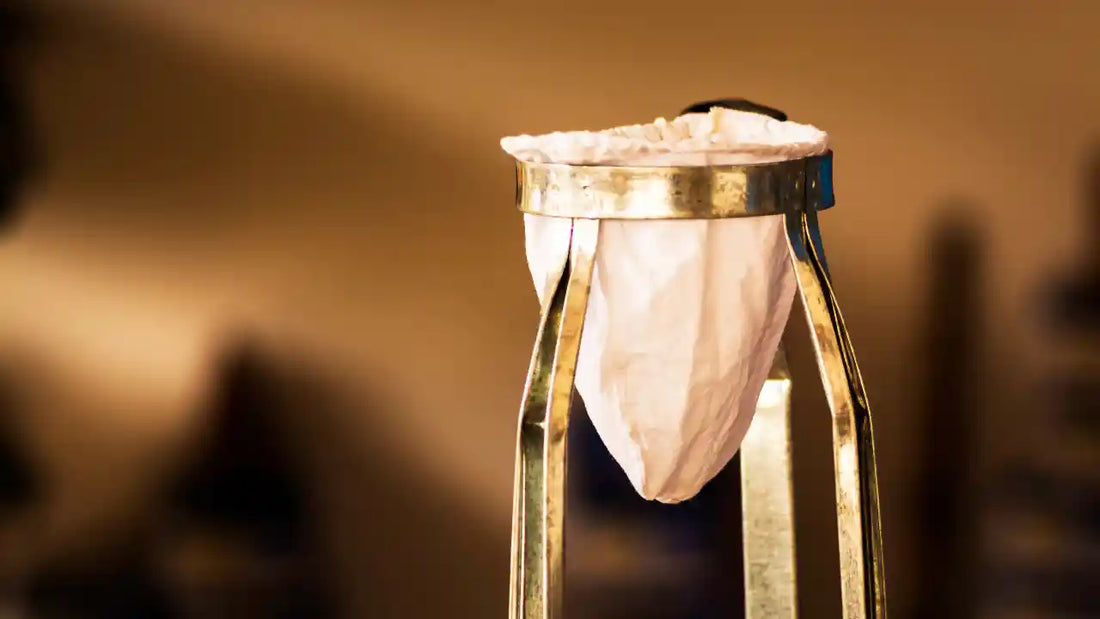
How to Clean and Reuse Your Coffee Filters
Share
Why Cleaning Filters Matters
You ever brewed your favourite beans, same grind, same ratio, and still ended up with a cup that just… felt off?
That dull, papery aftertaste? The weird bitterness that wasn’t there last week?
Chances are, it’s your filter.
Not the beans. Not the machine. Just a tired, unwashed, overused coffee filter.
Whether you’re using a metal mesh, or cloth, keeping it clean is essential for three big reasons:
- Flavor clarity: Coffee oils and microscopic fines build up over time, muddying the flavor.
- Brew consistency: A clogged or dirty filter changes how water flows, making your brew slower or unbalanced.
- Hygiene: Damp filters can harbor mold and bacteria, especially cloth ones, not something you want near your morning cup.
This guide walks you through how to clean each type of filter the right way, when to reuse vs. replace, and tips to keep your brews tasting fresh, every single time.
Let’s dive in.
Different Filter Types: What You’re Cleaning Makes a Difference
Before we jump into the how, let’s get clear on the what. The cleaning method depends entirely on the kind of filter you’re using, and using the wrong method can ruin your filter or, worse, your coffee.
Here’s a breakdown of the main types:
Cloth Filters (Cotton, Hemp, etc.)
- Used in: Pour-over setups like Hario V60 or Chemex, and some siphon brewers.
- Reusable? Yes, with care.
- Why clean it properly: Cloth absorbs oils and flavors. Without cleaning, your next brew might taste like old, rancid coffee or turn sour (literally — it can ferment if left damp).
Metal Filters (Stainless Steel Mesh, Gold Filters)
- Used in: French press, AeroPress metal filters, Moka pots, or pour-over setups.
- Reusable? Definitely.
- Why clean it properly: Coffee oils cling to mesh and can clog it over time, making your brew slow and murky.
Paper Filters
- Used in: V60, Chemex, drip machines, Aeropress.
- Reusable? Sometimes. Standard paper filters are technically single-use, but if you’re gentle and motivated, you can rinse and reuse them once or twice.
- Why clean it properly: Mostly for eco-conscious users. But it’s tricky, more on this in the filter-specific sections.
Each filter comes with its own quirks, and we’ll walk you through cleaning all three in detail.
How to Clean Coffee Filters: Method-by-Method Breakdown
This is the part that makes your morning coffee taste right. Here’s exactly how to clean each filter type, with simple, effective methods you can actually follow, even if you’re still half-asleep ☕😴
How to Clean Cloth Coffee Filters
Cloth filters are amazing, they give your brew a soft, tea-like mouthfeel. But they absorb oils and flavors, so you have to treat them like a pair of raw denim jeans… rinse gently, and care for them with love.
Daily Cleaning (After Each Use):
- Rinse with hot water immediately after brewing. Don’t let it dry out with coffee oils in it.
- Gently rub out the grounds and oils using your fingers. No soap, it’ll leave a taste.
- Hang it to air dry completely, avoid trapping moisture (which causes mold).
Deep Cleaning (Weekly or Biweekly):
- Soak in a bowl of hot water with a pinch of baking soda or a dash of white vinegar for 30–60 mins.
- Rinse thoroughly with hot water and air dry.
- Pro tip: Store it in water in the fridge between uses to prevent drying and stink (yes, that’s a thing).
How to Clean Metal Coffee Filters (Stainless Steel, Mesh)
Metal filters are built to last, but oils and micro-grounds can build up fast, making your coffee taste sludgy or bitter.
Daily Cleaning:
- Knock out the grounds into your compost bin or trash.
- Rinse under hot water while gently scrubbing with a soft brush or sponge.
- Let it dry completely to avoid rusting (even stainless steel can dull over time).
Deep Cleaning (Weekly or When Clogged):
- Soak in a 1:2 solution of vinegar and warm water for 30 minutes.
- Use a toothbrush or soft dish brush to clean out fine mesh.
- Rinse very thoroughly, especially if using vinegar (you don’t want that flavor in your cup).
How to Clean Paper Coffee Filters (If You Must)
Paper filters are meant to be disposable, but some coffee lovers like reusing them once or twice to reduce waste. If you’re one of them:
Cleaning Tips:
- Gently rinse immediately after use, while the filter is still wet and intact.
- Lay flat to dry, it may curl or shrink, but still usable once.
- Don’t scrub or twist, paper tears easily.
- If it looks stained, torn, or smells off, compost it.
💡 Our two cents: If you’re reusing paper, do it only once. Your brew clarity and flavor will drop off sharply after that.
Common Cleaning Mistakes to Avoid
Even the most passionate brewers slip up sometimes. But a few wrong moves during cleaning can slowly sabotage your coffee ritual, dulling flavours, shortening filter life, and even introducing unwanted bitterness or bacteria.
Here are some common cleaning missteps, and how to dodge them like a pro:
Using Soap on Cloth Filters
Sure, soap gets things “clean” but when it comes to cloth coffee filters, it’s your brew’s worst enemy.
Cloth is absorbent by nature. That means any detergent or scented soap you use gets trapped deep in the fibres… and ends up flavouring your next cup with bitter, soapy notes.
Avoid: Liquid dish soaps, fabric softeners, or fragrant cleaners.
Do this instead: Rinse thoroughly after each use and boil occasionally in clean water to remove oils and microbes.
Letting Filters Sit Dirty
Life gets busy. But leaving your filter to sit with old coffee grounds or oils is like leaving a banana peel in the sun, it will turn sour.
Letting a filter sit (even for a few hours) leads to:
- Oil build-up → bitter, murky-tasting brews
- Mould and mildew → unsafe, unhygienic brewing
- Stains and odour → especially in cloth and paper filters
Golden rule: Rinse immediately after brewing, even if you’re rushing out the door. Your taste buds will thank you.
Over-Scrubbing Metal Mesh Filters
You want your filter clean, not scratched raw. Many brewers think the harder they scrub, the better, but metal mesh filters are delicate.
Over-scrubbing can damage the micro-mesh, widening the pores and letting in fines (tiny coffee particles) that make your brew gritty or muddy.
✅ Use: A soft-bristled brush or sponge with warm water.
❌ Avoid: Steel wool, hard brushes, or abrasive scrub pads.
Not Drying Completely
A damp filter is a paradise for bacteria and mould. Whether it’s metal or cloth, storing your filter wet without airflow is a silent killer of both cleanliness and flavour.
- Metal can rust or develop biofilm
- Cloth can grow mildew or sour odours
- Even paper filters, if reused briefly, must dry completely
Tip: Always air-dry filters thoroughly in a well-ventilated space. If you’re storing cloth filters wet (in the fridge), use clean water and change it daily.
How Filter Hygiene Affects Your Brew
You might not always see it, but your filter remembers everything, especially if it’s not cleaned properly.
Over time, used filters collect coffee oils, microscopic grinds, and moisture, which can drastically affect your cup. Here’s how:
- Dirty filters lead to muddy flavors: That lingering bitterness or strange aftertaste? Often caused by stale oils trapped in your filter. Especially with mesh and cloth filters, this builds up fast.
- Unwashed filters = unwanted aromas: Even a day-old residue can release musty or rancid smells that overpower the delicate aromatics of specialty beans.
- Clean filters = a cleaner, brighter brew: When your filter is free of residue, your coffee tastes more like it should — nuanced, balanced, and crisp. The acidity shines, the sweetness hums, and the mouthfeel is smoother.
- The more precise the method, the more obvious the impact: Pour-over lovers, AeroPress aficionados, and siphon geeks — this one’s especially for you. These brewers highlight clarity, and even a slightly dirty filter can ruin the show.
Clean filter = clean cup. Every time.
Conclusion: Small Habit, Big Impact
If you’re investing in great beans, brewing with intention, and chasing that perfect cup… don’t let a dirty filter undo all your work.
Cleaning your coffee filters isn’t just a chore, it’s part of the ritual.
Start treating your filters like your favorite mugs: rinse, respect, and repeat.
Take 2 minutes after every brew. Your next cup will thank you.
FAQs - Frequently Asked Questions
Q: Can I use regular dish soap to clean my coffee filters?
A: For paper and metal filters, a mild, unscented soap is fine. But avoid using soap on cloth filters, as it can leave a residue that affects taste.
Q: How often should I clean my metal or mesh filter?
A: Rinse thoroughly after every use. Do a deep clean (with vinegar or baking soda) once a week to remove oil buildup.
Q: How do I prevent my cloth filter from getting moldy?
A: Rinse immediately after use and store it submerged in clean water in the fridge or hang it to air dry completely. Never leave it damp on the counter.
Q: Are used paper filters compostable?
A: Yes! As long as there’s no chemical coating, you can compost used paper filters along with the spent grounds.
Q: Why does my brew still taste off even after I’ve cleaned the filter?
A: Could be a mix of factors — old beans, dirty grinder, or even water quality. But a lingering soapy or bitter taste? That’s often a filter issue.

